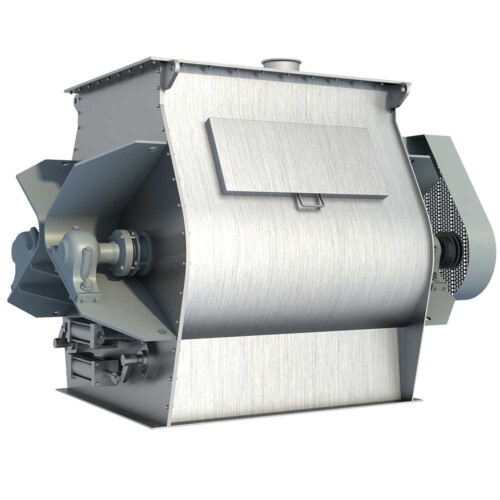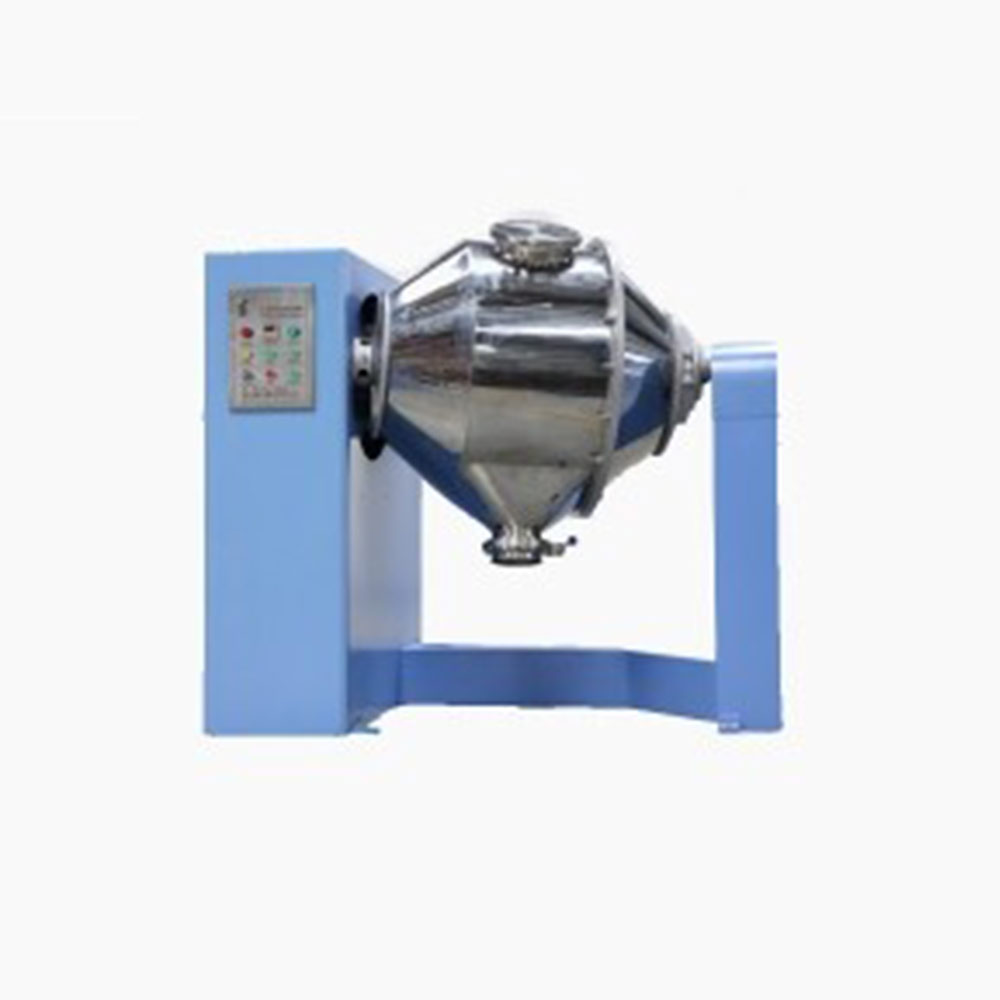Ask An Expert
Frequently Asked Questions
Yes, We can supply simple stand alone panels or automated PLC controlled systems. We normally install and test all controls on our mixers before they are shipped.
Yes, we normally test the mixers before they are shipped and mark out the wire need to connect on the control box.
We manufacture specialty mixing equipment for powder & bulk materials. Included are ribbon blender, plough mixer, conical screw mixer, twin shaft paddle mixer, V blender, double cone blender and other auxiliary equipment such as screw conveyor, quantitive auger filler.
We sell across the world, our cusotmers distribute 5 continents.
Share Us With Your Network
Coffee supplier has a taste for a high-output ribbon blender
Low-capacity blenders and high-volume customers don’t mix
New England Coffee, Malden, Mass., has imported and roasted coffee beans since 1916 and currently distributes them throughout New England and elsewhere in the US. The supplier provides wholesale coffees to institutions such as restaurants, hotels, and fast food chains. The supplier roasts 250,000 pounds of coffee beans daily.
In 1988 the coffee supplier began flavoring coffees as the gourmet coffee market surged in popularity. The supplier now produces 47 flavors including such novelty flavors as eggnog and pumpkin. “Hazelnut is our biggest seller; it outsells everything 3 to 1. But by the time you get down to candy cane flavor, we’re not talking about a big percentage of sales,” says vice president John Kaloyanides.
To produce the flavored coffees, New England Coffee receives about 2,300 150-pound bags of green coffee beans by truck daily. The bags are manually unloaded from the truck, palletized, and delivered by forklift to a cleaning area with shaking screeners where the beans are separated from foreign debris.
Pneumatic conveyors then transport the beans to eight 9,000-pound silos for storage prior to roasting. A computerized batching system pneumatically feeds preset quantities of various beans from the silos to roasters. After roasting, the beans are filled into bulk bags and then dumped to rotary mixers to be flavored.
After flavoring, the coffee beans are discharged to a bulk bag and moved by forklift to a conveying area where an operator unloads the bag with a vacuum wand. From there, some beans are conveyed to a bagging area for packaging, and others are conveyed to a milling area for grinding prior to packaging. Beans are ground on a roller mill at 7,500 lb/h. Both whole bean and ground coffees are packaged with form-fill-seal packagers. The packages are constructed of foil, polyethylene, or both and range from 1 ounce to 50 pounds.
Metal detectors are used at various process points before and after roasting.
Mixers have low output
In the past, New England Coffee blended their flavored coffees strictly in small tumbling mixers. As the gourmet coffee market grew, the supplier added more mixers. To flavor coffee in the tumbling mixers, liquid flavoring is manually poured over the beans,and the mixer rotates until all the beans have been coated.
“The mixers are actually cement mixers with a neoprene insert,” says Kaloyanides. “In the past, that’s all any [coffee supplier] used; there wasn’t much alternative.” A different insert is required for each flavor, and the insert must be removed and washed each time it’s used. “The inserts are expensive,” Kaloyanides says. “And they discolor after a while and have to be replaced.”
The tumbling mixer’s chief drawback, however, is its low output volume, according to Kaloyanides. “The mixers can handle only 50-pound batches, and blending takes about 25 minutes to get an even flavor distribution.” As well, Kaloyanides says the mixers aren’t very gentle and break some beans.
New blender is hard to find
“In the early ’90s, business increased dramatically over a 3-year period,” says Kaloyanides. “That’s when the gourmet industry went wild.” After adding some major customers, New England Coffee was eager to purchase a higher capacity, faster blender.
“We were looking for a rotary batch blender or ribbon blender and couldn’t find anything. Our coffee roaster manufacturer knew of a ribbon blender maker and referred us to them,” Kaloyanides says. In 1994 the blender manufacturer invited Kaloyanides to visit their facility for free coffee blending tests. “I flew to see them and was very impressed with the people and the facility.”
The blender being considered had ten times the capacity of the existing mixers. For the tests to succeed, the blender would have to coat the beans gently, evenly, and quickly. In addition, the blender would have to discharge 100 percent of the beans to avoid flavor cross-contamination.
A few batches of coffee were tested, and the blender performed well. It evenly and quickly blended the flavoring with the beans without damaging them. After blending, all the beans discharged. “The results were excellent right away. It was obvious that the blender would work for us,” Kaloyanides says.
Coffee supplier installs ribbon blender
After the successful tests, New England Coffee installed a model RB-3000 ribbon blender. The stainless steel blender’s drum has a 25-cubic-foot batch volume and a 500-pound capacity. The unit has an internal sprayline to apply liquid flavoring to the coffee beans. The sprayline and nozzles are mounted off-center in the drum. The mixing action continuously replaces the coffee beans in the spray zone so that a thorough coating occurs with no overspraying. The ribbon blender’s internal lifters and baffles, which provide the blending action, are bolted to brackets that are welded to the drum wall. For more stringent sanitary applications (such as food and pharmaceutical production), the lifters and baffles can be continuously welded to the drum wall. Models meeting USDA and Ag Canada standards are available.
Supplier is pleased with ribbon blender
Blender startup was easy, according to Kaloyanides. “There were no problems. It came in the door and we were running in about 8 to 12 hours.”
“There’s little or no breakage because the drum very slowly rolls the beans over, as opposed to banging them around.” In addition, uniform blending is achieved in about half the time of the old mixer. “With this blender, mixing time is down to about 10 minutes.” [Editor’s note: The blender manufacturer says the unit can blend product in ½ to 2½ minutes for applications not requiring spraying.]
Because all of the beans discharge after blending,an operator simply swabs the drum between batches to avoid flavor cross-contamination.
Kaloyanides says the blender has been trouble-free from the beginning. “I’ve never had a problem with it. It’s kind of a pleasure buying a piece of equipment that does what it’s supposed to do and doesn’t cause you problems. It’s nice to not have the manufacturer try to sell you $10,000 worth of replacement parts. The thing just keeps on running. We’re extremely pleased with it. I wouldn’t think of buying one from anyone else.”
New England Coffee uses the rotary batch blender for high-volume flavored coffees, such as hazelnut, and continues to use the older mixers for the low-volume and seasonal blends.
Ask An Expert


















